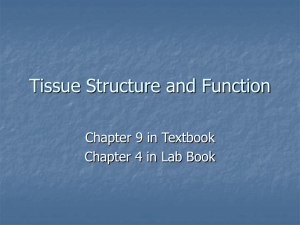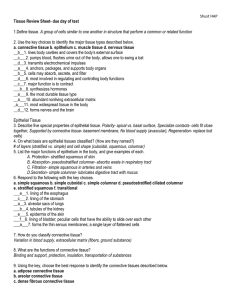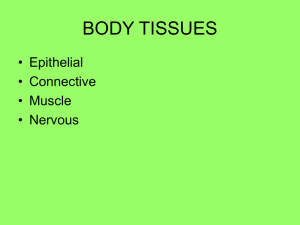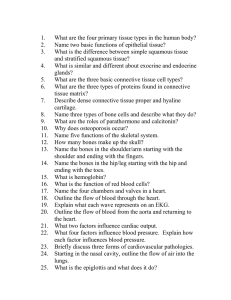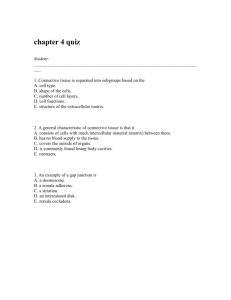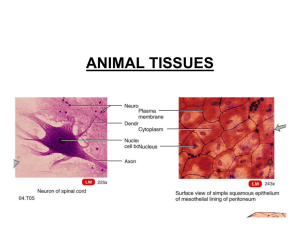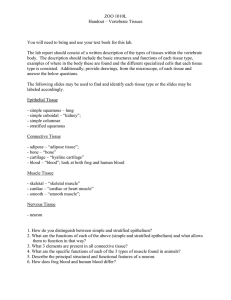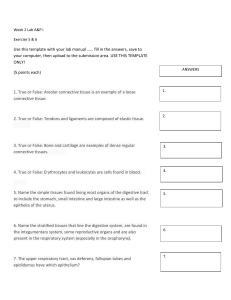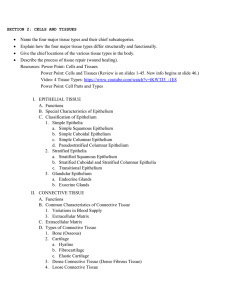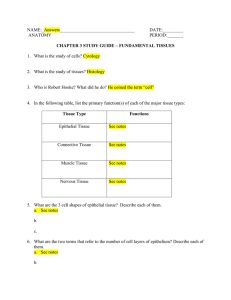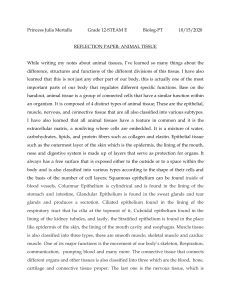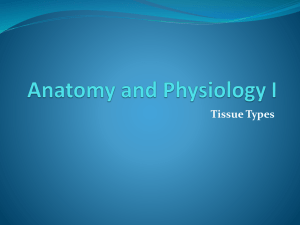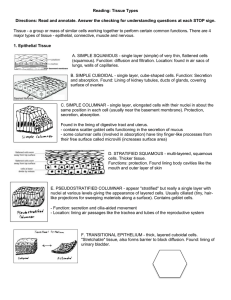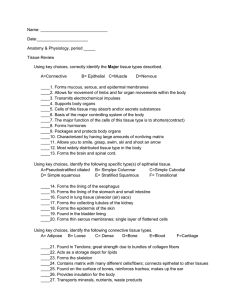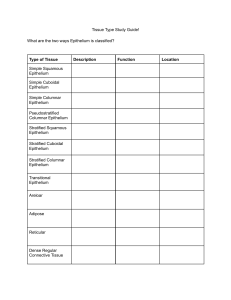Classification of Tissues
advertisement
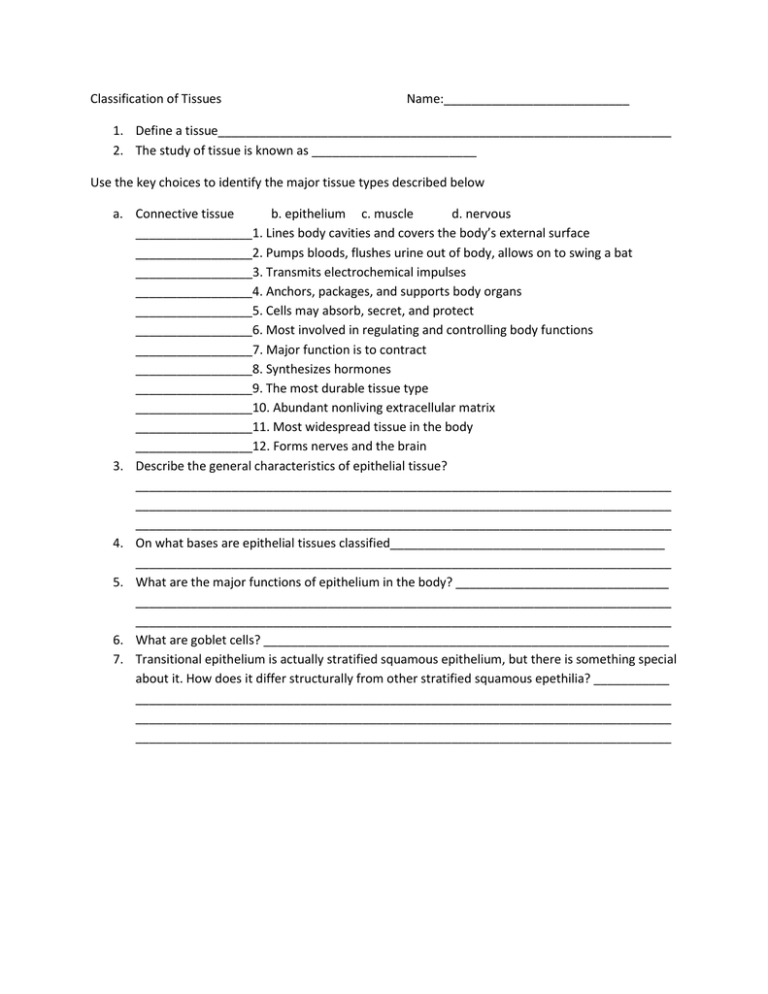
Classification of Tissues Name:___________________________ 1. Define a tissue__________________________________________________________________ 2. The study of tissue is known as ________________________ Use the key choices to identify the major tissue types described below a. Connective tissue b. epithelium c. muscle d. nervous _________________1. Lines body cavities and covers the body’s external surface _________________2. Pumps bloods, flushes urine out of body, allows on to swing a bat _________________3. Transmits electrochemical impulses _________________4. Anchors, packages, and supports body organs _________________5. Cells may absorb, secret, and protect _________________6. Most involved in regulating and controlling body functions _________________7. Major function is to contract _________________8. Synthesizes hormones _________________9. The most durable tissue type _________________10. Abundant nonliving extracellular matrix _________________11. Most widespread tissue in the body _________________12. Forms nerves and the brain 3. Describe the general characteristics of epithelial tissue? ______________________________________________________________________________ ______________________________________________________________________________ ______________________________________________________________________________ 4. On what bases are epithelial tissues classified________________________________________ ______________________________________________________________________________ 5. What are the major functions of epithelium in the body? _______________________________ ______________________________________________________________________________ ______________________________________________________________________________ 6. What are goblet cells? ___________________________________________________________ 7. Transitional epithelium is actually stratified squamous epithelium, but there is something special about it. How does it differ structurally from other stratified squamous epethilia? ___________ ______________________________________________________________________________ ______________________________________________________________________________ ______________________________________________________________________________ Respond to the following with the key choices a. Pseudostratified columnar b. Simple columnar c. simple cuboidal d. simple squamous e. stratified squamous f. transitional _________________1. Lining of esophagus _________________2. Lining of stomach ________________3. Lung tissue, alveolar sacs ________________4. Tubules of kidney _______________5. Epidermis of skin _______________6. Lining of bladder _______________7. Forms thin serous membranes, single layer of flattened. 8. What are the general characteristics of connective tissue?_______________________________ ______________________________________________________________________________ ______________________________________________________________________________ 9. What functions are performed by connective tissue? ___________________________________ ______________________________________________________________________________ _____________________________________________________________________________ Using the key, choose the best response to identify the connective tissues described. a. b. c. d. Adipose Loose Dense Elastic cartilage e. fibrocartilage f. Blood g. hyaline cartilage h. bone _______________1. attaches bones to bones and muscles to bones _______________2. Acts as a storage depot for fat _______________3. Fluid matrix, containing platelets _______________4. Makes up the intervertebral discs _______________5. Forms your hip bone _______________6. Composes basement membrane, which is beneath skin/epithelium tissue ________________8. Provides flexible framework for external ear ________________10. Matrix hardened do to calcium salts, provides levers for muscles to act on ________________11. Insulates against heat loss 10. List the 3 types of connective tissue cells and describe each 11. 12. 13. 14. 15. What are major bone cells called_______________________ What are cartilage cells called __________________________ What are fat cells called ________________________ What are the 3 types of fibers that make up connective tissue, describe each. What are the 3 types of membranes made by epithelial tissue? Describe each 16. What membrane is made up of connective tissue?_________________________. 17. Describe each type of muscle: Skeletal muscle Smooth muscle Cardiac muscle 18. List the general characteristics of nervous tissue? ______________________________________ ______________________________________________________________________________ ______________________________________________________________________________ 19. Distinguish between neurons and neuroglial cells? ____________________________________ ______________________________________________________________________________ ______________________________________________________________________________



